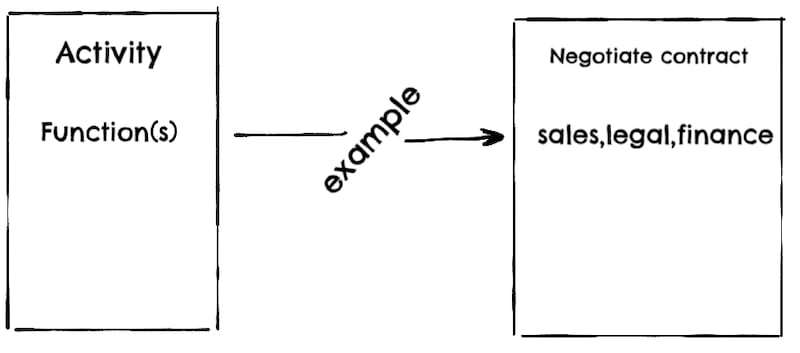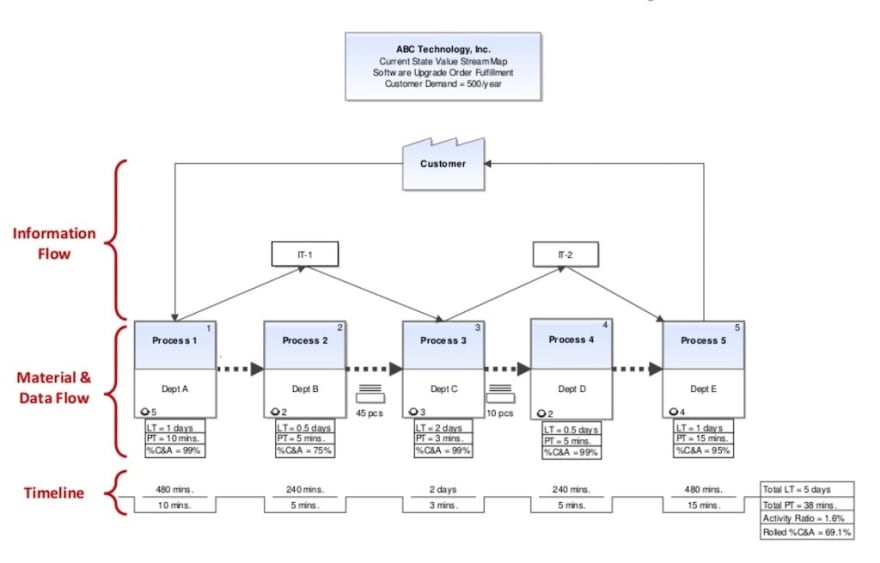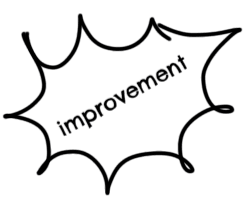29
Book notes: Value Stream Mapping
The book explains the benefits of Value Stream Mapping and goes in detail about how to run it.
If you can't describe what you are doing as a process, you don't know what you're doing.
Edwards Deming
- Make work visible.
- Clear connection from every function to customer.
- Holistic systems thinking view.
- Help a restructuring and alignment to deliver customer value.
- Simplification tool:
- Easy to understand, easier to change.
- Practical means to drive improvement.
- Help onboarding.
- Margins erode.
- New competition or market share loss.
- Want to increase company's market value.
- Creating new products.
- To explore pro/cons of centralization and decentralization.
- Socialize: talk, explain, let people ask, discuss.
- How the manager believes it operates.
- How it is supposed to operate.
- How it really operates.
- How it could operate.
- Cross-training.
- Robust process management systems.
- Going to gemba.
- Tying improvements to business needs, strategy and annual goals.
- True collaboration aligned by a common goal amongst departments.
- Assessing performance using standard time and quality metrics.
- Provide effective means to establish a strategic direction for making improvements:
- Because you see the whole picture.
- Avoid suboptimization.
- Macro level processes, not detailed steps.
- Cyclical view places the customer in the centre.
- Deepens org understanding:
- Distills complexity.
- Can be understood by everybody.
- Takes days to create, instead of weeks.
- Data driven.
- Make work visible.
- Clear connection from every function to customer.
- Holistic system-Thinking view.
- Help a restructuring and alignment to deliver customer value.
- Simplification tool:
- Easy to understand, easier to change.
- Practical means to drive improvement.
- Help onboarding.
If you can't describe what you are doing as a process, you don't know what you're doing.
Edwards Deming
- Using it only for improvement work.
- Only for tactical improvements. Cues:
- Value stream map has >30 steps.
- Formatted in swim lanes.
- Missing information flows.
- Creating them during a Kaizen Event.
- Should happen before.
- Creating maps but taking no action.
- Mapping with an inappropriate team or no team at all.
- Team must have the authority to make changes.
- No metrics.
- Start with Strategy Deployment:
- Method for defining and gaining consensus about priorities needed to realize an organization's business goals.
- The value stream to improve will be obvious.
- Recommended books:
- Value stream mapping when:
- Margins erode.
- New competition or market share loss.
- Want to increase company's market value.
- When solving a problem with A3 management, a workflow is needed.
- Creating new products.
- To explore pro/cons of centralization and decentralization.
3 consecutive days: deep focus.
Prepare phase:
- Educate the mapping team and leaders on:
- Lean principles.
- Value stream mapping:
- Purpose.
- Benefits.
- How is done.
- Effect in org.
- Daily briefing.
- Roles.
- The degree of value stream mapping success is highly dependent on the amount of up front planning, reflected in a charter.
- Transforming a value stream often produces a fair amount of organizational disruption.
Charter:
- Download from TKMG website.
- Planning.
- Communicating.
- Aligning.
- Building consensus.
Charter sections:
- Scope:
- Specific conditions:
- Proper scoping is critical when value stream mapping in knowledge work environments, because there is significant process variation exists within a single product family.
- In many cases specific conditions may represent less than 25% of the value stream volume, but the future state design applies to 75% or more.
- There is no much variation at the macro level as we think.
- Dont be afraid to narrow your scope beyond your comfort level.
- First/Last step:
- Use verb-plus-noun.
- Improvement time frame:
- Recommendation: Fix deadline (3-6 months) and scope future state to fit it.
- Specific conditions:
- Current state problems and business needs:
- Clarity is a significant lever for building consensus and driving change.
- Reasons for change. Sales pitch.
- Same for "Benefits to Customers" and "Benefits to Business".
- Measurable Target Condition:
- From X to Y.
- Also the percentage improvement that they represent (is it a 5% improvement or a 100% one?).
- Accountable Parties:
- Mandatory: Executive sponsor + Facilitator.
- Executive sponsor:
- Mandatory.
- Person who oversees the entire value stream.
- Who is ultimately accountable for the results.
- May not be on the team, but at minimum:
- Active on development of charter.
- Attend briefings.
- Monitor progress on transformation plan.
- Facilitator:
- Mandatory
- Key on the success.
- Teacher, time keeper, change agent, provocateur.
- Comfortable with conflict, good listener.
- Should not oversee nor work in the value stream.
- Briefing attendees:
- Get buy-in from support functions.
- Mapping team:
- As small as possible, but all functions must be represented.
- Typical 5-7 people, never more than 10.
- Mostly leadership positions:
- So they can influence/authorize future state.
- Senior leaders understand the big picture better, which can lead to more innovative suggestions.
Not communicate but socialize the value stream mapping charter:
- Affected leadership.
- Mapping team.
- Workers in are that will be included:
- Need a safe environment to be honest about current state.
Data to collect:
- Current and forecasted customer demand (1-2 years).
- Quality reports.
- How work flows.
- Who does the work.
- How the value stream is performing on the day the map is created.
- How the manager believes it operates.
- How it is supposed to operate.
- How it really operates.
- How it could operate.
- Everybody introduces themselves where they stand in the map and state their internal/external providers/customers.
- Ensure expectations are aligned with charter.
- Charter is not open for debate.
- Rules of engagement.
- Going to the gemba.
- Objective:
- See, feel, hear, smell the current condition.
- Understand physical separation between producer and consumer.
- Workers more open, comfortable, and honest in their own environment.
- Show respect for workers.
- Do it twice the same day.
- Second time do it backwards:
- Different perspective.
- Easier to see "pull" design opportunities.
- The whole team together.
- Value adding.
- Necessary non-value-adding.
- Unnecessary non-value-adding.
- Walk the Value Stream:
- Write improvement ideas in a list and avoid discussing them.
- Map Layout:
- Focus on basic:
- What is done.
- Who does it.
- What order.
- Focus on basic:
- Walk the Value Stream (again):
- Performance of value stream.
- Find barriers to flow.
- Add Map details.
- Summarize the map.
- Customer Post-it in top center.
- If there is an external supplier, place the customer on top right and supplier in top left.
- Agree on process blocks of the value stream:
- Between 5-15.
- Less than 5: not enough details.
- More than 15: too detailed (likely) or value stream mapping too broad.
- New process block when work stops flowing, usually due to:
- Handoff.
- Work accumulates.
- Work is only processed at predetermined time intervals.
- Process should have:

- Branching is ok if there is just one/two process difference.
- Parallel work is also ok.
- Number the process blocks sequentially for easy reference.
- Process time (PT):
- Time to do one unit of work.
- If work is batched, one batch.
- Includes:
- "Talk time" -- meetings.
- Read and think time.
- Record separately "machine time" if it is significant.
- Do not include waiting or delays.
- It is the time it would take to do the work if the process workers could work on one item uninterrupted.
- If PT varies wildly use median, not mean.
- Opt for accuracy over precision.
- Lead Time (LT):
- Queue time + delays + PT.
- Use business hours (typically 8 hours per day).
- Percent Complete and Accurate (%CA):
- Quality.
- Incorrect, incomplete or unclear information from upstream.
- Ask downstream process and place metric in upstream one.
- WIP:
- In-box + In-process + Out-box.
- Make note of oldest item in queue.
- Number of people.
- Number of hours worked.
- Process effectiveness.
- Work volume/demand rate.
- Work trigger.
- Actions or conditions that inhibit the uninterrupted progression of work.
- Do not include high LT or low %CA.
- Examples:
- Batching:
- Note size and frequency.
- Not all batching is bad.
- System downtime.
- Shared resources:
- % of time staff is not available.
- Task switching and interruptions.
- Prioritization rules:
- Conflicting or differing rules.
- Batching:

- Place WIP to the left of the process block. Use inbox icon.
- Connect processes with dashed push arrows or pull withdraw arrows.
- Add IT Systems that connect the processes:
- Use lightning blot if an automated process that push information to person or other IT System.
- In parallel processes, pick up the one with the longest lead time.
- Summary metrics:
- Total LT.
- Total PT.
- Activity Ratio (AR):
- Degree of flow.
- Total PT / Total LT * 100.
- 2-5% is not uncommon.
- Rolled Percent Complete and Accurate:
- (%C&A) process 1 * (%C&A) process 2 * ...
- 1-10% is not uncommon.
- In parallel paths, include the %C&A of all processes.
- Total Label Effort:
- Sum of PT, including all parallel processes.
- Expressed as either:
- Total hours.
- Equivalent FTE (Full time employee).
- Labor dollars.
- FTE formula: Total labor PT * # occurrences per year / # available hours per employee per year.

- Loopbacks.
- Unnecessary hand-offs.
- Rework due to errors and lack of clarity.
- Batching.
- Functions missing or getting involved too early or too late in the process.
- Redundant activities.
- High variation in how work is performed.
- No documented standard work.
- Excessive inspection (reviews, approval, audits).
- Overspecialization of staff.
- Existing technology not fully leveraged.
- Underutilization of skills.
- Compliance overkill.
- Delays due to juggling multiple responsibilities.
- Push and overburden.
Example from Value Stream Mapping in Office and Service:

- What work should be done.
- Two ways of eliminating waste:
- Eliminate work.
- Remove unnecessary non-value-adding activities.
- Reduce effort for necessary non-value-adding activities.
- Reduce effort on value-adding activities.
- In heavily siloed orgs, steepest lead time reductions are achieved by reducing hand offs.
- Adding work:
- When overall process time and lead time are reduced.
- Temporarily add inspection step to prevent defects reaching customers.
- Eliminate work.
- Two ways of eliminating waste:
- Making that work flow.
- Key question: what is preventing the lead time from being the same as the process time for each and every process blog?
- Focusing on Lead Time reduction forces problems to surface.
- Examples:
- Apply classic lean countermeasures and improvement work.
- Address root cause of batches.
- Shift sequential process to parallel.
- Combine tasks to reduce hand-offs.
- Resequence work.
- Managing the work to achieve continuously improved performance:
- How will you determine if the value stream is performing as intended?
- Who will monitor and mange value stream performance?
- Each value stream needs 2-5 KPIs.
- Typical: Quality, cost, delivery, safety, morale.
- Many process blocks will benefit from their own KPIs.
- KPIs must be actively managed by the value stream manager.
- Firing people is disrespectful/not lean.
- Remaining people will have no further interest in improving.
- Review charter.
- Review the current state findings.
- Introduce relevant counter measures:
- Standardizing the work.
- Build quality at the source.
- Installing visual management.
- Pull systems.
- Batch reduction.
- Level loading.
- Work balancing to takt time.
- Cells and collocation.
- Work segmentation.
- Cross-training.
- Automation.
- Avoid advanced techniques until the basics are working.
- Most office and service value streams will require more than one value stream map.
- Blank sheet that is 30% shorter than the current value map.
- Place current value map on top of it.
- Design usually happens organically.
- Page 116 list some design question to help.
- Start with what should be done, not how.
- Include only the process description.
- Decide which functions will perform the work at each process, and the metrics.
- Calculate summary metrics and create a table to compare current vs future VSM.
- Note in the future state the improvements required:
- Use "kaizen bursts":

- What, not how.
- Improvements will need to go through the PDSA cycles.
- Use "kaizen bursts":
- Brief the relevant leadership and key stakeholders.
- Measurable target.
- Proposed countermeasures:
- Kaizen bursts.
- The authority for determining how the improvement will be designed and implemented is given to the people who do the work being improved.
- Use the word "countermeasures" (instead of "solution") to reflect fluidity.
- Improvements are temporary countermeasures, not permanent solutions.
- Execution method:
- Just-do-its:
- Small, low risk, easy to test, cheap.
- Kaizen Event:
- 2-5 days.
- Significant planning and careful scoping.
- Projects:
- More complex or expensive.
- Just-do-its:
- Socialize: talk, explain, let people ask, discuss.
- Attendees:
- Executive sponsor.
- Value stream champion.
- Few owners of the improvements.
- Purpose:
- Assess progress.
- Ensure robust PDSA is being used.
- Address obstacles.
- Consider shift in plan if new information or condition warrants it.
- Agenda suggestion in page 143.
- Sustaining improvement is easy:
- Plan well.
- Build consensus.
- Follow PDSA to the letter.
- Have strong management system:
- One person that owns the whole value stream and has the authority to affect it.
- In mature continuous improvement orgs, this person is responsible for the P&L, often the value stream is structured as a business unit, that borrows, leases or purchases shared services from other parts of the org.
- Going to gemba.
- Tying improvements to business needs, strategy and annual goals.
- True collaboration aligned by a common goal amongst departments.
- Assessing performance using standard time and quality metrics.

